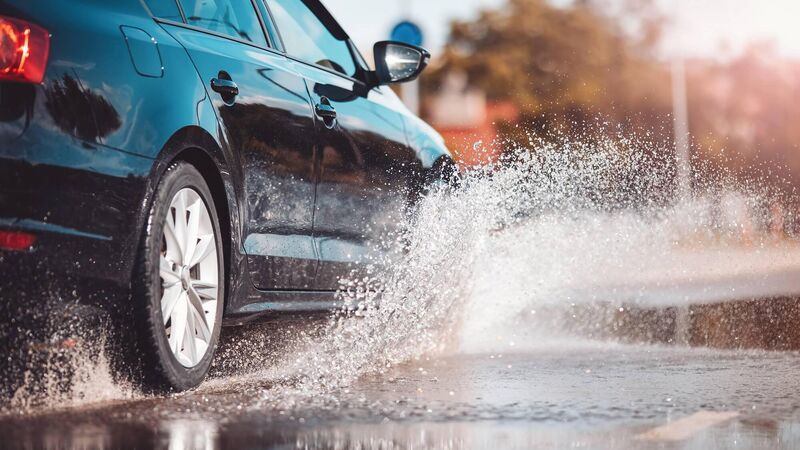Life Hack: Is it ever safe to drive through a flood? Here's what you need to know

Is it safe to drive on a flooded road?
Now that we are firmly in autumn, chances are we are going to see more wet weather. In recent weeks, Storm Amy saw flooding hit many parts of the country. In weather events like this, flooded roads can be a challenge for drivers. In short, if you come across a flooded section of road, it is a good idea to avoid driving through it.
If you come upon a stretch of road that is flooded but looks like the water is only a few centimetres deep, don’t carry on and instead try to choose another route to your destination. Flooded roads that appear shallow could be deeper than you think – potholes and dips could be hidden under the water, waiting to damage your vehicle.
According to the AA, water plays havoc with vehicle electrics and could cause several issues, like your airbag suddenly deploying for no reason.
If the road is closed due to a flood, do not proceed along that route, even if it looks safe to you, as it has been closed for a reason.
Sometimes roads are closed because they are blocked by flooding, but they can also be closed to traffic due to their fragile state after wet weather. If you see a sign for a closed road, obey it and find an alternative route.
It happens. If you have already driven through a flooded road, make sure when you reach the other side of the flood to drive slowly with your foot on the brake pedal for a short distance after you emerge.This helps to dry the brakes, allowing them to work effectively.
If you do break down in a downpour, don’t open your bonnet. Rain-soaked electrics can make it harder to start the engine and this could cause more damage.
You may decide to leave the car at home, or perhaps you don’t drive anyway. In this case, your personal safety should be your priority.
Make sure you can be seen on the road by wearing a high-visibility jacket or reflective armband.
In windy conditions, a sudden gust of wind could blow you into the path of an oncoming vehicle, so be extra aware of your surroundings.
If you are walking, do so on a footpath where possible, not on the street. If there is no footpath, walk on the right-hand side of the road, facing oncoming traffic.
Make sure you drive with dipped headlights at all times and ensure your tyres’ thread depth is not below 3mm.
When driving along wet roads, remember to keep extra distance between you and the vehicle travelling in front. It takes longer to stop on wet roads, so slow down to prevent a collision in the event you need to brake suddenly.
If you are driving behind goods vehicles, keep extra distance as they generate a considerable amount of water spray from the wet road surface, which reduces your visibility.
If travelling on roads with higher speed limits, such as 100 km/h and 120 km/h, be aware of the danger of aquaplaning – this is when a layer of water causes a loss of traction and makes the vehicle unable to steer, brake, or accelerate. If your steering starts to feel light, ease off the accelerator and slow down gradually.
You should also stay aware of your surroundings as wet weather is often accompanied by strong winds too. Stay vigilant for falling debris on the road and vehicles veering across the road to avoid obstacles on their side. Watch out for washed-out roads, earth slides, broken water or sewer mains, loose or downed electrical wires, and fallen or falling objects.
In strong winds, high-sided vehicles and motorcyclists are particularly vulnerable and may lose control easily. Allow extra space between you and vulnerable road users like these.







